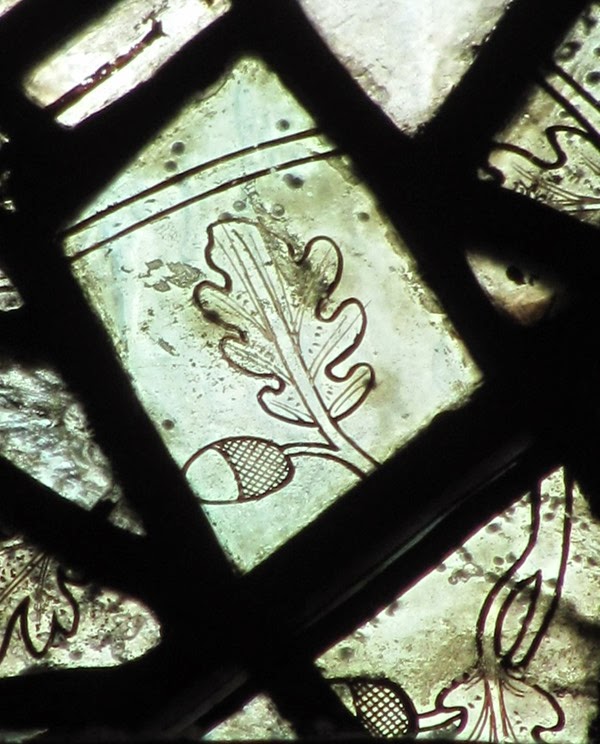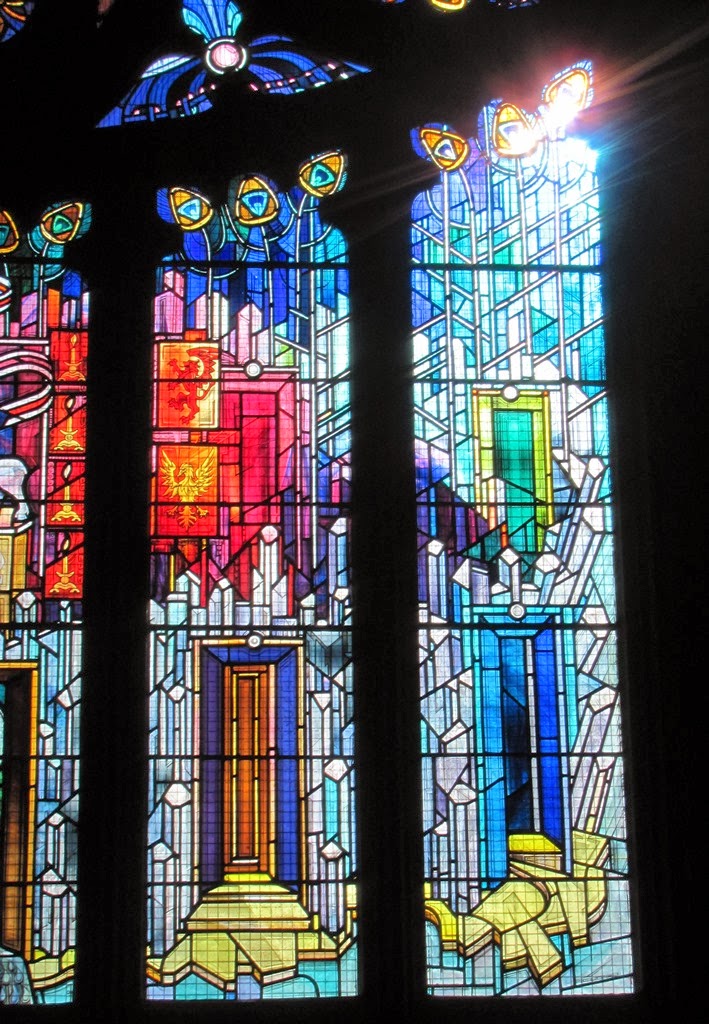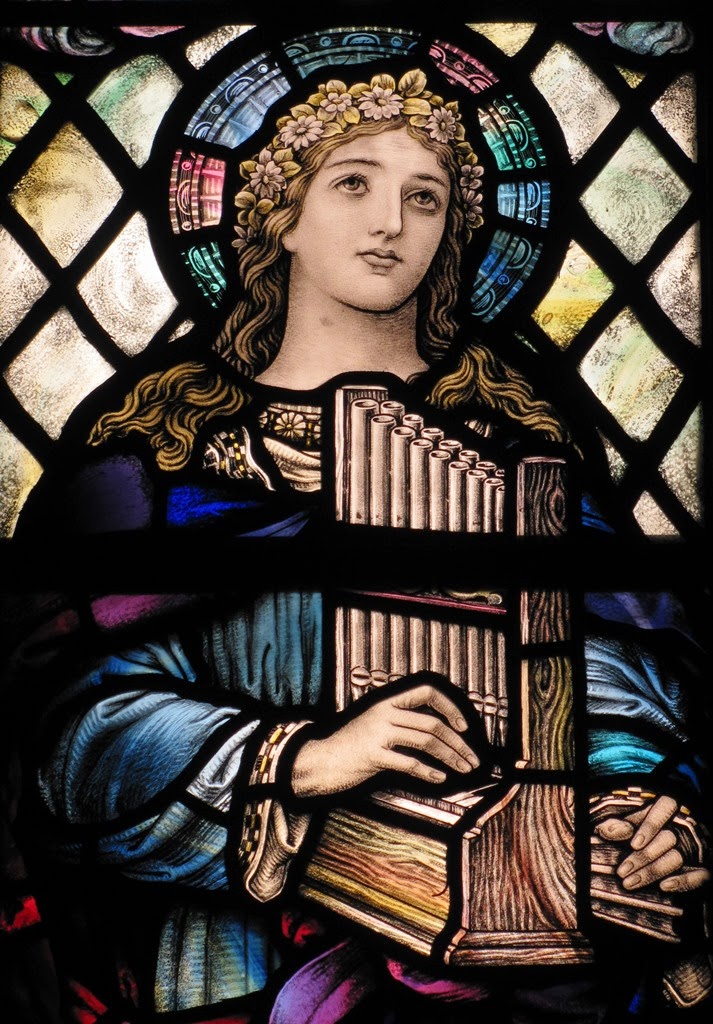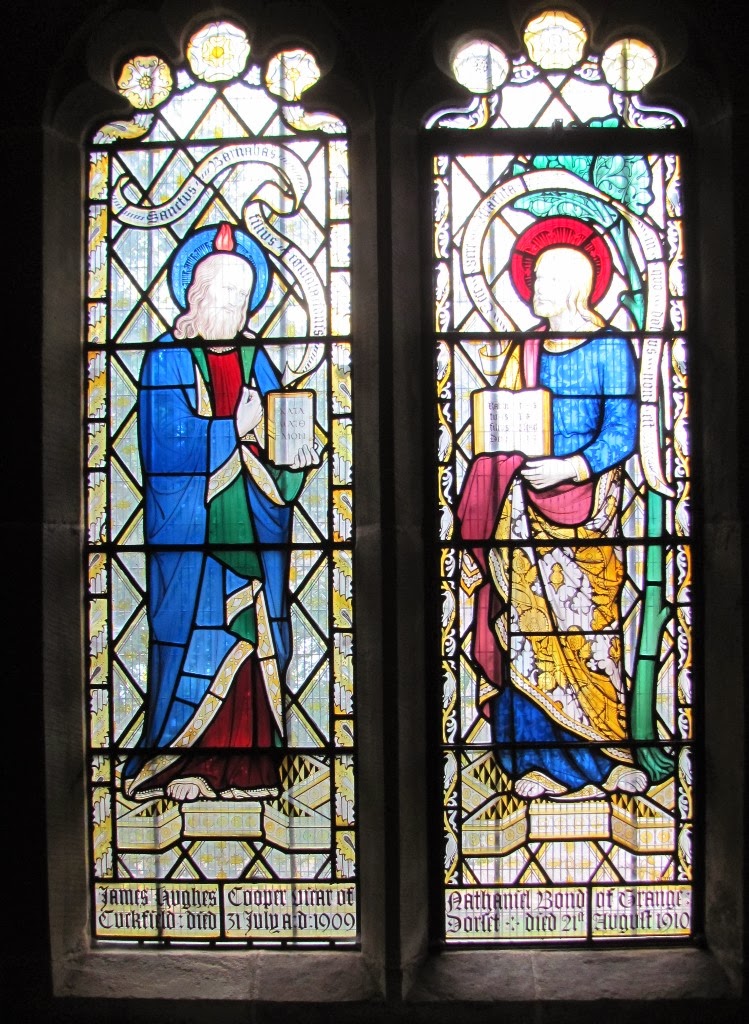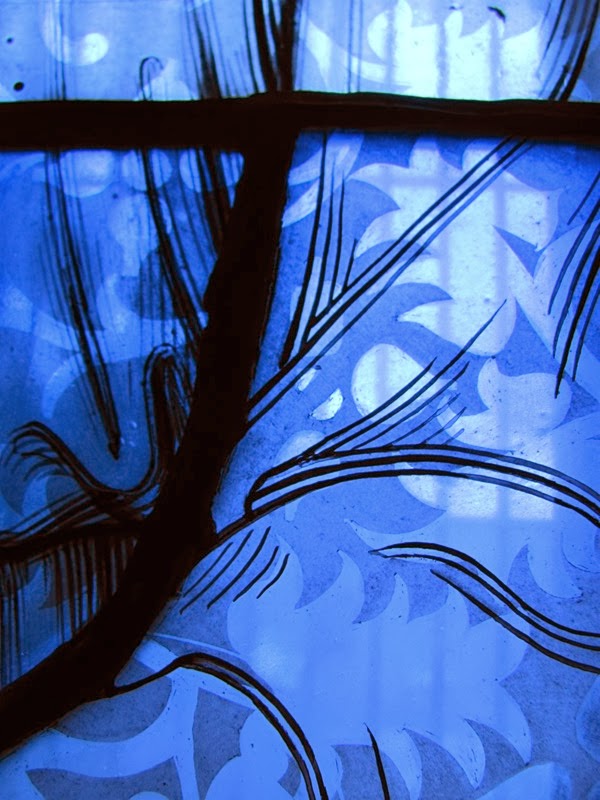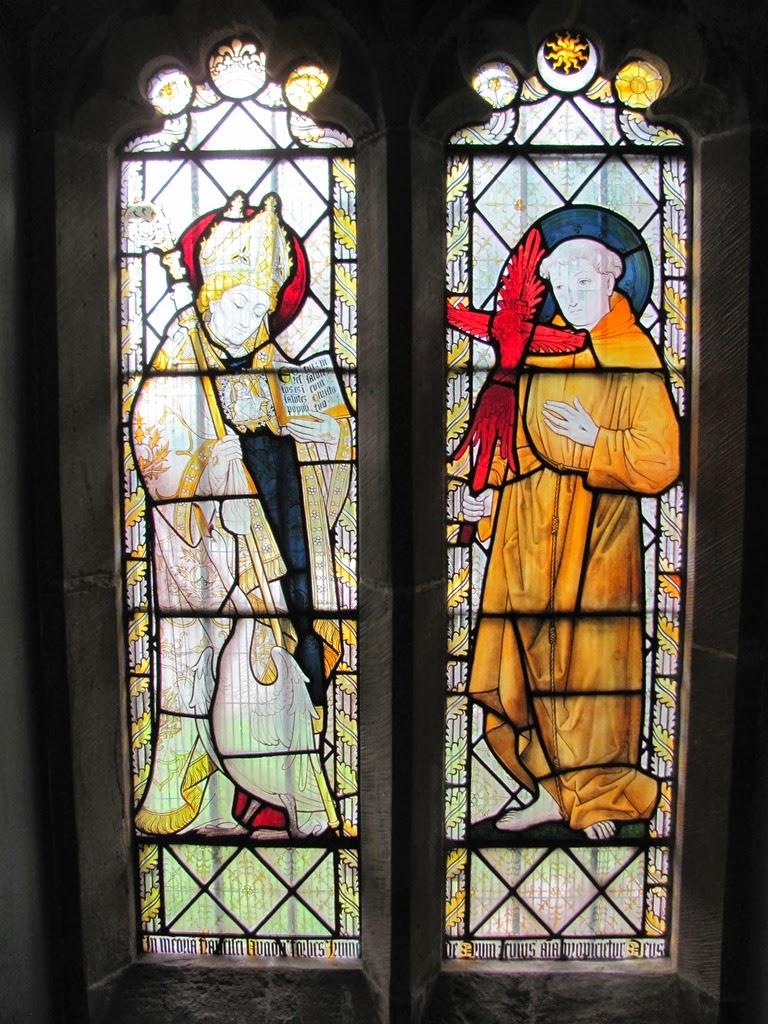Until I went to York Minster earlier in the month, I had previously only seen fragments of medieval stained glass, usually joined together in an incomprehensible hotch potch to make a complete window. York minster offers a great chance for catch up here, with windows dating back to 1250.
This window isn't as old as that, dating to around 1310. It features the Tree of Jesse, which is designed to demonstrate the ancestry of Christ back to the Jesse (the father of King David). It's quite a common theme in stained glass windows and this one is probably the oldest on that theme in England.
A panel has been inserted pointing out the restorations of the window and suggesting that the 1789 restoration wasn't quite what it could have been.
The virgin Mary apparently.
The 1789 restoration gets the blame for putting a male head on her!
The figure of Jesse is traditionally portrayed as lying along the bottom of the tree looking up at it. He's in red at the bottom of the middle panel in the first photo. Here's a close up of his face.
The Great East window has been removed for restoration. The guide tells us that a window needs a serious overhaul every 150 years or so. They've hung an enormous print of the window in it's place.
It was made between 1405 and 1408 by John Thornton. He was paid 56 pounds for the job and received a 10 pound bonus for completing the window on time.
One advantage of the window not being in place is that there is a rare chance to get a closer look at some of the Panels. A few have been set out in an exhibition in light boxes at floor lever. You'd have to have excellent eyesight to be able to see the detail in the glass when they were back in situ.
This particular panel is St John sailing to Patmos. If you want to try and locate its position in the above photo, it's in the second column in from the left, ten panels up.
There was a small exhibition showing how stained glass was looked after. Until very recently any breakages in the glass would have had to have had a piece of lead installed to hold it together, now with the advent of new adhesives, the glass can be stuck together without lead. In the hull of the boat you can see two cracks where the original piece of glass has been broken into three. When it was taken down, the hull had two black leaded lines on it, which have now been replaced by just gluing the broken pieces together.
This pane is, St John Glimpses God in Majesty, from Revelations. It can be found 2 panels in from the right and 10 panels up.
This Panel is the seven churches, also from Revelations. It is 4 frames in from the right and 10 up.
I don't have any information about this window at all except what you can see here. It has incorporated some medieval glass into a more modern window. The figure of St Michael is obviously old but the shield below him looks to be much newer.
Some of the border looks like it has been made up of pieces of glass originally made for somewhere else.

























